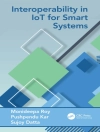The current economic crisis is cutting the automotive sector to the quick. Public authorities worldwide are now faced with requests for providing loans and accepting guarantees and even for putting large automotive companies under state control. Assessing the long-term benefits of such help and wei- ing the needs of different sectors against each other poses a major challenge for the national policies. Given the upcoming change of customer preferences and state regulations towards safety, sustainability and comfort of a car, the automotive industry is particularly called to prove its ability to make nec- sary innovations available in order to accelerate its pace to come out of the crisis. Consequently the Green Car is assuming a prominent role in the current debate. Various power train concepts are currently under discussion for the Green Car including extremely optimised internal combustion engines, hybrid drives and battery-electric traction. Electrical cars are the most appealing option because they are free of local emissions and provide the opportunity to use primary energy from sources other than crude oil for transport. Well to wheel analysis show that their green-house gas emissions can be rated negligibly small if electricity from renewable sources like wind and solar is used.
Table of Content
Green Cars.- Energy Efficient Vehicles for Road Transport – EE-VERT.- Nanoelectronics: Key Enabler for Energy Efficient Electrical Vehicles.- Safety.- Left Behind Occupant Recognition Based on Human Tremor Detection via Accelerometers Mounted at the Car Body.- Novel Pre-Crash-Actuator-System based on SMA for Enhancing Side Impact Safety.- On the Feasibility of a Bistatic Radar for Detecting Bad Road Conditions.- Cooperative Intersection Safety – The EU project INTERSAFE-2.- Intersection Safety for Heavy Goods Vehicles.- V2X Communication and Intersection Safety.- Utilization of Optical Road Surface Condition Detection around Intersections.- Stereovision-Based Sensor for Intersection Assistance.- Object Recognition based on Infrastructure Laserscanners.- User Needs for Intersection Safety Systems.- Driver Assistance.- Evaluation of ADAS with a supported-Driver Model for desired Allocation of Tasks between Human and Technology Performance.- Lane Recognition Using a High Resolution Camera System.- Automatic Generation of High Precision Feature Maps of Road Construction Sites.- Laserscanner Based ADAS for Motorcycle Safety.- Graceful Degradation for Driver Assistance Systems.- Lane Departure Warning and Real-time Recognition of Traffic Signs.- Test-bed for Unified Perception & Decision Architecture.- Real-Time Camera Link for Driver Assistance Applications.- Components and Generic Sensor Technologies.- Miniaturised Sensor Node for Tire Pressure Monitoring (e-CUBES).- Development of a Single-Mass Five-Axis MEMS Motion Sensor.- MEMS Sensors for non-Safety Automotive Applications.- Fault-tolerant ASIC Design for High System Dependability.- Short PWM Code: A Step towards Smarter Automotive Sensors.- Low-cost Approach for Far-Infrared Sensor Arrays for Hot-Spot Detection in Automotive Night Vision Systems.- Smart Sensors: Enablers for New Safety and Environment Initiatives.- Airbag Electronics: from Single Building Blocks to Integrated Solutions.- New Functions, New Sensors, New Architectures – How to Cope with the Real-Time Requirements.- Modular Inertial Safety Sensing Concepts for Functional and Environmental Fit.- System Architecture for Adaptive Radar Sensors.












